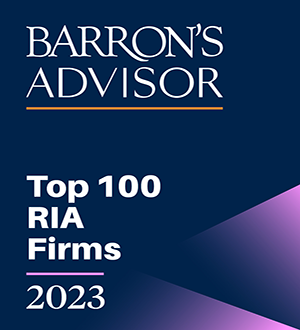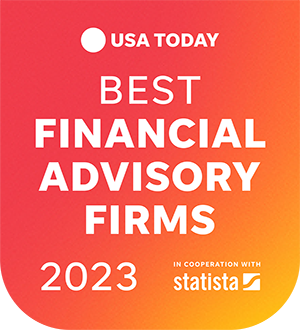Investment Outlook Spring 2023
By Argent Wealth Management, LLC on April 10, 2023
Resilience in the Face of Uncertainty
First Quarter Review, Second Quarter Outlook:
When individuals or businesses are resilient in the face of uncertainty it is a good sign of character and culture. When stock markets are resilient in the face of uncertainty it is a positive sign as well. The Nasdaq 100 (QQQ), S&P 500 (SPY), Dow Jones (IYY), and Russell 2000 (IWM) index of small cap stocks were all positive in the quarter. In addition, the U.S. Aggregate Bond Index (AGG) was also positive.
In 2022, as noted in our Winter Investment Outlook, both the S&P 500 and Long-Term Treasury Bonds (LTTBs) were negative, only the third time since 1941 this has occurred. That means, coming into 2023, a lot of bad news was already priced into stock and bond markets. The more investors are willing to pay for put options on stocks, in which the buyer can “put” the seller of the option into stocks the option was bought for (essentially buying an insurance contract), the more the VIX (CBOE Volatility Index) rises. Therefore, VIX is often seen as a good representation of sentiment. Fear abounded in 2022.

Since 4/1/2013 VIX has averaged 18.05. In 2022 VIX averaged 25.6 (according to raw daily data from mactrotrends.net sourced on 3/30/2023). This is a big difference! Essentially, investors were willing to pay 1.4x more (25.6/18.05=1.4) for insurance in 2022 than average over the last ten years.
Towards the end of 2022 fear began to dissipate. The stock market hit a recent high but on March 13 VIX spiked intra-day to over 30 again. What happened?

On Friday, March 10, Silicon Valley Bank (SVB) was closed and the FDIC was appointed receiver. SVB catered to venture capital (VC) and private equity (PE) firms, especially those focused on technology. The tech industry was favored in 2020, so deposits grew substantially. To earn some income on deposits, as most banks do, SVB invested in long-term bonds. But in 2020, a 10-year U.S. treasury yield was below 1% for much of the year. Investing in long-term bonds at such low yields was a huge mistake.
When yields rise, older bonds lose value as higher-yielding issues become available. This year, 10-year treasuries fluctuated between ~3.4% and ~4.1%. Moreover, in 2022, the tech sector represented by the XLK, an ETF (exchange traded fund) that tracks the tech stocks in the S&P 500, was down 27.7%. Many private tech companies lost value as well. For this reason, over the past year PE and VC firms focused on tech found it hard to raise new capital and they simultaneously pulled money that was already raised to invest in opportunities created by the selloff in tech.
As SVB’s customers withdrew deposits the bank had to start selling their long-term treasuries at significant losses. Moody’s, a rating agency, caught wind of this and warned of a credit rating downgrade. At this point, many PE and VC firms thought it best to transfer deposits to safer banks. A bank run ensued.
Regulators intervened quickly. At first it was unclear if deposits over the FDIC insured $250,000 limit would be safe. Then, on Sunday March 12, the FDIC and regulators announced that they would also close Signature Bank. This alarmed investors. Was the collapse of SVB going to cause contagion?

Regulators, despite closing Signature Bank, also announced that all deposits would be guaranteed at both banks. The Fed (Federal Reserve) would then create a facility where banks could post long-term bonds as collateral for a year to meet depositors’ requests for redemption without marking a loss on that collateral. Despite these actions, investors were scared. Memories of the 2008-2009 global financial crises only heightened concerns. VIX spiked over 30.
Regional banks mostly reside in small cap indices. IWM (first chart in this publication) was outperforming large cap stocks until regional banks sold off precipitously.

The Federal Reserve’s Role in the Collapse of SVB
In simple terms, one way banks make money is by loaning or investing at long-term interest rates and paying depositors at short-term interest rates. Throughout 2020 and 2021, the Fed kept the Federal Funds Rate (FFR) near zero to help fight the economic damage from the COVID-19 Pandemic. Low interest rates and fiscal stimulus spurred investment by businesses and households. Both stock and home prices climbed significantly in 2020 and 2021.
In addition, throughout the back half of 2020 and 2021, businesses and households flush with cash from stimulus increased demand for products, services, and commodities. Russia then invaded Ukraine in February of 2022. Global oil, natural gas, and wheat supply were disrupted. Meanwhile, China continued to enforce strict COVID-19 social distancing policies. Supply chains were negatively impacted around the globe. Lack of supply and increased demand caused inflation to soar higher than most expected.
To combat inflation the Fed embarked on one of the fastest tightening cycles in history.

This rapid rise in rates ultimately led to the collapse of SVB when they had to sell long-term bonds at a loss to fund deposit outflows.
What’s Next?
Banks
Regulators took swift and decisive action, guaranteeing deposits and setting up a loan facility to protect regional banks from additional bank runs. More precariously positioned regional banks may decrease in strength and experience more deposit outflows. More securely positioned regional banks, along with larger banks, may increase in strength and experience more deposit inflows.

Markets
Despite fear related to bank collapses, this alone is unlikely to cause contagion affecting broader swaths of the economy. This is at least partly why stock markets have remained resilient. For example, the S&P 500 (SPY) has re-captured its 200-day moving average (MA), and even when VIX went over 30, the S&P 500 (SPY) never went below the lows seen in December 2022. The Nasdaq 100 (QQQ) never went below its 200-day MA.


Indices with more financials, struck by investor fear, went down the most. More economically sensitive sectors like technology (XLK) and consumer discretionary stocks (XLY) have remained resilient and continue to outperform less economically sensitive stocks like healthcare (XLV) and consumer staples (XLP).


The above table also denotes those indices where the 50-day MA crossed over the 200-day MA from below. That is called a golden cross. Historically, a golden cross has been correlated with bull markets. When multiple indices golden cross, as happened earlier this year, breadth is strong (meaning many stocks are in uptrends). This also tends to correlate with bull markets.
The sector chart and financial stock exposure table both imply investors believe damage from SVB’s collapse is likely to be contained and not cause any major economic problem. Otherwise, indices with lower financial weights and more economically sensitive sectors would be down, anticipating more severe economic damage.
The Fed
Monetary policy changes tend to flow into the economy nine to twelve months after they are enacted. Therefore, the true impact of policy changes over the last year is still unknown. Although it is unlikely the collapse of some regional banks will cause economic contagion, bank management teams have been warned. It is better to be conservative when loaning or investing money against deposits rather than aggressive. Regulators may also enact stricter investing and lending rules. Thus credit conditions will tighten.
The Fed wants inflation to recede and this will be aided by tighter credit conditions. It is harder to invest in your home or grow a business if banks are less willing to lend money to aid in those endeavors. Hence, it is not surprising that after SVB’s collapse investors immediately repriced the trajectory of the Federal Funds Rate (FFR).

Investors now predict the Fed will decrease rates sometime in the second or third quarter and odds are the FFR will not exceed 5.25%. Expectations prior to SVB’s collapse were for rates to be in the 5.25-5.50% range in September, and they were expected to stay in that range through December. Now investors are pricing in rates in the 4-4.5% range by next December.

A lower FFR is positive for stocks. Lower interest rates make valuations more attractive: the cost of capital decreases so companies have more incentive to invest in growth projects. This leads to both growth of earnings, and in aggregate, economic growth and innovation.
To conclude, market resilience in the face of uncertainty is a sign the uptrend in stocks that started last October is likely to continue. Despite uncertainty related to bank collapses, the bigger risk remains whether Fed policy is too restrictive, which could cause a recession, or too loose, which could cause inflation to remain elevated.
So it all Comes Back to Inflation.
If inflation does not remain on a downward trajectory, the Fed could be forced to increase the FFR and keep it higher longer than investors are currently pricing into stock and bond markets. If that were to happen, it would likely put downward pressure on stock markets.
However, inflation is on a downward trajectory that looks sustainable. In February, CPI increased 6%, the smallest 12-month increase since the period ending September 2021. Every category except shelter and transportation was at or below the previous month’s reading. Shelter accounted for over 70% of the increase in CPI. This is despite the Case-Schiller Index (see chart on page 2) showing month over month declines since July, 2022. Shelter lags 6-18 months in CPI.
If inflation remains in a downward trajectory the Fed has the green light to follow the policy path investors are now pricing in. In that case, the uptrend in stocks is more likely than not to continue in 2023.
The weight of the evidence points to stocks continuing their climb upward from October 2022 lows. Investors should stay disciplined and use volatility to add risk selectively within their tolerance.
Sign up to receive more information about Argent's Services and Solutions.
Argent Wealth Management, LLC is a group comprised of investment professionals registered with Hightower Advisors, LLC, an SEC registered investment adviser. Some investment professionals may also be registered with Hightower Securities, LLC (member FINRA and SIPC). Advisory services are offered through Hightower Advisors, LLC. Securities are offered through Hightower Securities, LLC.
This is not an offer to buy or sell securities, nor should anything contained herein be construed as a recommendation or advice of any kind. Consult with an appropriately credentialed professional before making any financial, investment, tax or legal decision. No investment process is free of risk, and there is no guarantee that any investment process or investment opportunities will be profitable or suitable for all investors. Past performance is neither indicative nor a guarantee of future results. You cannot invest directly in an index.
These materials were created for informational purposes only; the opinions and positions stated are those of the author(s) and are not necessarily the official opinion or position of Hightower Advisors, LLC or its affiliates (“Hightower”). Any examples used are for illustrative purposes only and based on generic assumptions. All data or other information referenced is from sources believed to be reliable but not independently verified. Information provided is as of the date referenced and is subject to change without notice. Hightower assumes no liability for any action made or taken in reliance on or relating in any way to this information. Hightower makes no representations or warranties, express or implied, as to the accuracy or completeness of the information, for statements or errors or omissions, or results obtained from the use of this information. References to any person, organization, or the inclusion of external hyperlinks does not constitute endorsement (or guarantee of accuracy or safety) by Hightower of any such person, organization or linked website or the information, products or services contained therein.
Click here for definitions of and disclosures specific to commonly used terms.



